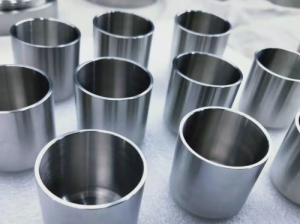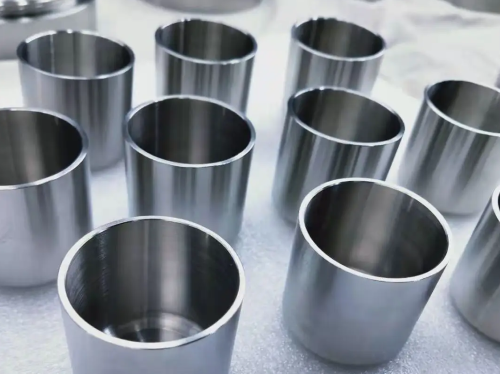Introduction
Crucibles play a pivotal role in various industrial and laboratory processes, and selecting the appropriate material is crucial for ensuring the success and reliability of these applications. Two materials that often stand out in this regard are zirconium and platinum.

In this article, we will delve into a comparative analysis of zirconium crucibles and platinum crucibles, exploring their respective properties, applications, and considerations for choosing the right crucible for specific needs.
1. Melting Point and Thermal Properties:
Zirconium and platinum both boast impressive melting points, making them suitable for high-temperature applications.
- Zirconium takes the lead in this aspect, with a melting point exceeding 1,850 degrees Celsius. This characteristic positions zirconium crucibles as a robust choice for processes involving extreme temperatures, such as metal alloy melting and crystal growth.
- On the other hand, platinum is no slouch in this department, with a melting point surpassing 1,768 degrees Celsius, making it exceptionally resistant to heat.
The choice between the two may hinge on the specific temperature requirements of the application at hand.
2. Cost Considerations:
Cost is often a significant factor in material selection, especially in large-scale industrial applications.
- Zirconium tends to be more cost-effective than platinum, making it an attractive option for projects with budget constraints.
- While platinum’s higher cost may limit its use in certain applications, it remains an unparalleled choice where the budget allows for the unique properties it brings to the table.
3. Corrosion Resistance:
Corrosion resistance is a critical consideration in many applications, particularly those involving harsh chemical environments.
- Zirconium crucibles exhibit excellent corrosion resistance, particularly against acids and alkalis. This quality ensures the integrity of the crucible material during chemical processes, making zirconium suitable for a wide range of applications.
- Platinum, with its renowned corrosion resistance, excels in situations where exposure to aggressive chemical substances is a primary concern.
4. Material Purity:
Maintaining material purity is paramount in various industries, and both zirconium and platinum contribute to this aspect.
- Zirconium crucibles are known for their chemical inertness, helping preserve material purity by minimizing the risk of contamination during processes.
- Platinum, with its inert nature, is also an excellent choice for applications requiring a completely uncontaminated environment, such as in certain laboratory settings or high-precision experiments.
5. Applications:
The choice between zirconium and platinum often boils down to the specific requirements of the application.
- Zirconium finds applications in diverse industries, including aerospace, metallurgy, and materials research, where its combination of high-temperature stability and corrosion resistance is valued. In aerospace, for instance, zirconium crucibles contribute to the production of high-performance materials crucial for the demanding conditions of aircraft components.
- Platinum crucibles, on the other hand, are often preferred in laboratories and research settings where the highest purity and resistance to extreme conditions are essential. Their use in certain high-precision experiments, where even the slightest contamination can compromise results, highlights platinum’s unique position in specific applications.
Related reading: Get The Most Suitable Crucible For Your Lab
Conclusion
In the crucible conundrum of zirconium vs. platinum, the choice depends on a careful consideration of factors such as melting point, cost, corrosion resistance, and intended applications. Zirconium crucibles offer a cost-effective solution with excellent high-temperature performance and corrosion resistance, making them versatile for various industrial processes. Platinum crucibles, while commanding a higher cost, shine in applications where the utmost purity and resistance to extreme conditions are non-negotiable.
In the end, the decision between zirconium and platinum crucibles should align with the specific needs and priorities of the project at hand. Whether it’s the cost-effective reliability of zirconium or the unparalleled purity of platinum, each material brings its own set of advantages to the crucible selection table.
Stanford Advanced Materials (SAM) possesses extensive expertise in the production and distribution of premium crucibles. Feel free to submit an inquiry, and our team will be delighted to assist you.
